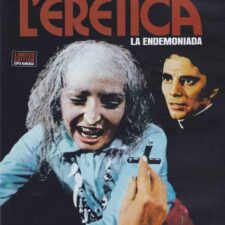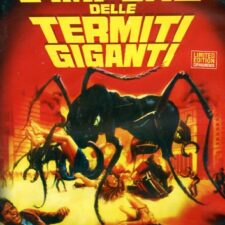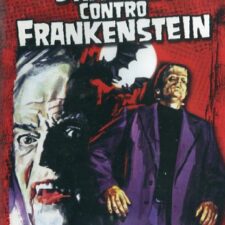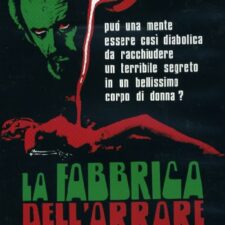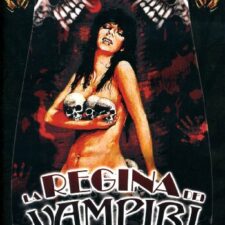Dettagli
Directed by
Jose Mojica Marins
Cast:
Jose Mojica Marins, Sergio Hingst, Ozualdo Candeias, Andreia Bryan, Lurdes Ribas, Mario Lima, Roney Wanderney, Helena Nogueira, Graveto, Jose Carlos
Cinematography
Giorgio Attili
Art Director
Nico Rosso
Film Editor
Luis Elias
Written by
Jose Mojica Marins and Rubens F. Lucchetti
Produced by
Giorgio Attili, Jose Mojica Marins and George Michel Serkeis
Year
1969
Supplements: The Nightmares of Coffin Joe Eurotika documentary and a biography and filmography of Jose Mojica Marins.
Dolby Surround – Region 0 – Portuguese sub. English
The reasons for the perceived moral collapse of modern Brazilian society are being debated on the TV show A Light in the Darkness. A psychiatrist called Doctor Sergio presents a series of dramatic vignettes, which serve to highlight the perils of narcotics abuse and illicit sexual activity. The doctor’s fellow intellectual panelists wonder what filmmaker Jose Mojica Marins is doing on the show and they probe Sergio about the rumours that suggest that the doctor is an unethical operator. Sergio admits that he administered LSD to four willing human subjects and he goes on to reveal the fuller details of his experiment: the four test subjects were asked to focus on a poster depicting Marins’ filmic alter ego Coffin Joe and their subsequent LSD-induced hallucinations transported each of them to a psychedelic Hell-world where they were tormented by a malevolent supernatural entity, the misogynistic and sadistic Coffin Joe in person.
Awakening of the Beast suggests that Jose Mojica Marins was an extremely media-savvy operator. The show is distinctly post-modern in the way that it draws upon a number of filmic textual devices and styles, along with a variety of music and print-based texts, and jumbles them all into a sub-psychedelic and surreal but highly effective exercise in self-promotion. The show opens with Coffin Joe himself, sporting his sinister black top hat, cloak and mysterious medallion and directly addressing the audience with the words, “My world is strange … Though it may be filled with strange people, none … are stranger THAN YOU!” Coffin Joe’s schlock horror approach here brings to mind elements of the mock horror stage personas adopted by Screamin’ Jay Hawkins and his UK counterpart Screaming Lord Sutch. The film’s credits then play over shots of panels from Coffin Joe comics before the action cuts to the dramatic vignettes that Doctor Sergio is relating to his fellow TV show panelists. One panelist describes the doctor’s case-studies as being, “A catalogue of depravity.”
Depraved or not, the vignettes themselves are a bit of a mixed bag in cinematic terms. Some of them are staged in a fairly conventional way, coming on like simple dramatic reconstructions of the doctor’s file papers. Others are set to music and appear to have been staged and performed by a beatnik performance art collective. The choreography that marries the visuals to the soundtrack in these ‘performance art’-like vignettes works very well for the most part and some interesting songs are featured too. Many of the vignettes contain very surreal or bizarre elements: a sequence where a sleazy businessman is eating pasta winds up bringing to mind Auntie Jessie’s nightmare about eating spaghetti from The Beatles’ Magical Mystery Tour film. Nearly all of the vignettes feature sleazy or disturbing scenarios and characters, along with varying degrees of female nudity or females in a state of partial undress. Consequently, there’s a bit of a sub-exploitation/sexploitation cinema-like feel apparent here that clashes with the art film-cum-world cinema-like ambience that is also present. Evidence of budgetary constraints, and the use of the odd (intentionally?) incongruous music cue, gives a couple of the sequences a slightly Ed Wood-ish air.
The scenes set on the A Light in the Darkness TV programme are staged in a convincing round-table-debate-cum-current affairs TV show-like manner, with realistic behind-the-scenes activity in the TV studio being revealed at one point. It’s here that Jose Mojica Marins gets to offer a representation of his real world self, telling the panel, “My position is neutral. I don’t even know why I’m here.” Marins warns the snobbish intellectuals that they should not confuse Marins the man with Coffin Joe: Marins stresses that Coffin Joe is merely a fictional character that he plays. Sergio explains that he saw Marins on another TV show, The People’s Court of Truth, which allows the doctor to reminisce about that show’s content: seen on a television screen, Marins is questioned and judged by a panel of regular Brazilian citizens, who wind up validating his opinions and acknowledging his integrity and talent. This is a neat device that effectively allows Marins to provide evidence of the plaudits that his work has received and to articulate his views on the state of filmmaking in Brazil, etc, directly to his current film’s audience. A sequence which details the doctor setting up his LSD-based experiment features encounters with more Coffin Joe comics, a Coffin Joe poster, a Coffin Joe pop song and a visit to a cinema that is screening a Coffin Joe film, resulting in clips from the earlier film being utilized onscreen here.
All of the action up to now has been presented in black and white but when Doctor Sergio’s test subjects have their doses of LSD administered, their subsequent hallucinations are brought to life via some very lively and really quite startling colour cinematography. Some ultra-psychedelic colour schemes and solarization effects are employed in this section of the film. Coffin Joe’s nightmarish world is inhabited by all manner of strange creatures and these creatures are brought to life in some very inventive and effective ways. The lengthy and surreal hallucinogenic sequence, like some of Doctor Sergio’s earlier dramatic vignettes, features a whole range of disorientating, freak out inducing camera angles and whacked out and trippy editing techniques. The soundtrack here features an avant-garde cacophony that is very unsettling and disturbing. Treated cackles, screams, moans and cries, strange choral arrangements and electronic effects fed through audio generators, reverb units and echo boxes all vie for aural supremacy. It’s all very effective stuff. The doctor reveals that his test subjects survived their ordeal and he imparts one final revelation that is intended to simultaneously counter the accusations of unethical working methods and support his theses concerning Brazilian society’s perceived moral decline.

 Blue Planet (3 Blu-Ray)
Blue Planet (3 Blu-Ray)  Bobby Solo Foto Autografata Autografo Original signed 14x21CM COA 024561
Bobby Solo Foto Autografata Autografo Original signed 14x21CM COA 024561 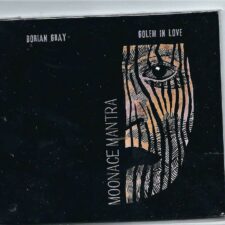 MONAGE MANTRA - GOLEM IN LOVE (cd nuovo)
MONAGE MANTRA - GOLEM IN LOVE (cd nuovo)  Di Caprio di RikPen (Riccardo Penati)
Di Caprio di RikPen (Riccardo Penati) 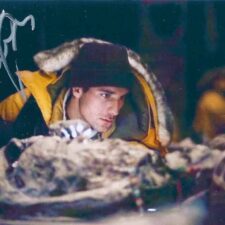 Raoul Bova Photo (10x15cm) Alien Vs Predator Hand Signed - foto autografata 001
Raoul Bova Photo (10x15cm) Alien Vs Predator Hand Signed - foto autografata 001  Caroline Munro - CRYING WOLF - photo hand signed 20x25cm foto autografata s109
Caroline Munro - CRYING WOLF - photo hand signed 20x25cm foto autografata s109  Dutch Swing College Band* Featuring Sidney Bechet – King Porter Stomp [BBE 12019] (M29) - Used Vinyl, 7″ 45 RPM
Dutch Swing College Band* Featuring Sidney Bechet – King Porter Stomp [BBE 12019] (M29) - Used Vinyl, 7″ 45 RPM  Gashapon Bandai: Gundam MSM-04
Gashapon Bandai: Gundam MSM-04 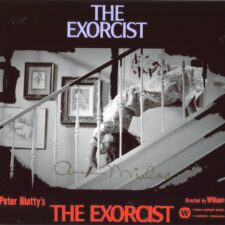 Ann Miles "Spiderwalk" (in The Exorcist) hand signed photo 20x25 foto autografata (s101)
Ann Miles "Spiderwalk" (in The Exorcist) hand signed photo 20x25 foto autografata (s101)  Sophia Loren - Bocca Da Fuoco DVD Hand Signed Autografato COA
Sophia Loren - Bocca Da Fuoco DVD Hand Signed Autografato COA 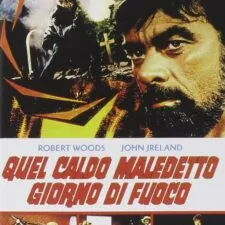 Quel caldo maledetto giorno di fuoco - dvd
Quel caldo maledetto giorno di fuoco - dvd  Songs Of Two Savoyards - William Schwenck Gilbert fine '800 inizio '900
Songs Of Two Savoyards - William Schwenck Gilbert fine '800 inizio '900  Anna Russell – How To Write Your Own Gilbert And Sullivan Opera [NBE 11124] (GIU 186/21) - Used Vinyl, 7″ 45 RPM
Anna Russell – How To Write Your Own Gilbert And Sullivan Opera [NBE 11124] (GIU 186/21) - Used Vinyl, 7″ 45 RPM  Alien vs. Predator (Blu-ray)
Alien vs. Predator (Blu-ray)  Cartolina ufficiale Eintracht Braunschweig autografata da Ali Muhamed Mahjoubi
Cartolina ufficiale Eintracht Braunschweig autografata da Ali Muhamed Mahjoubi 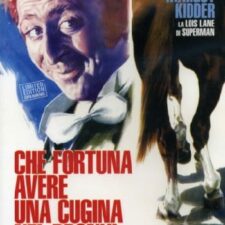 Che Fortuna Avere Una Cugina Nel Bronx! (Ed. Limitata E Numerata 550) - dvd
Che Fortuna Avere Una Cugina Nel Bronx! (Ed. Limitata E Numerata 550) - dvd 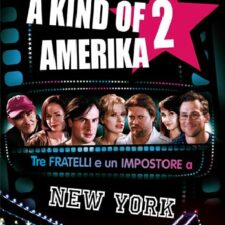 A kind of Amerika 2 - dvd
A kind of Amerika 2 - dvd 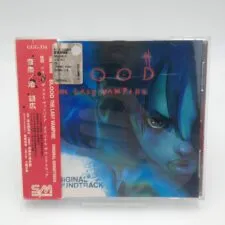 Blood: The Last Vampire Original Soundtrack SM Records (used cd)
Blood: The Last Vampire Original Soundtrack SM Records (used cd)  I leoni di Sicilia. La saga dei Florio. Ediz. illustrata di Stefania Auci - libro autografato hand signed book
I leoni di Sicilia. La saga dei Florio. Ediz. illustrata di Stefania Auci - libro autografato hand signed book 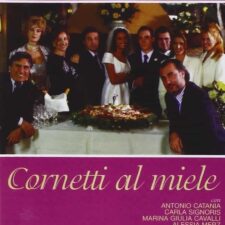 Cornetti Al Miele - dvd
Cornetti Al Miele - dvd  Ammutinati dell'Atlantico - dvd
Ammutinati dell'Atlantico - dvd  Gianna Nannini - Cartolina "Scandalo" hand signed 10x15cm autografata
Gianna Nannini - Cartolina "Scandalo" hand signed 10x15cm autografata  Almost Dead - dvd
Almost Dead - dvd  JOE DANTE: dvd Small Soldiers - Hand Signed - Autografato
JOE DANTE: dvd Small Soldiers - Hand Signed - Autografato  Fahrenheit 11/9 - dvd
Fahrenheit 11/9 - dvd  Cartolina ufficiale Eintracht Braunschweig autografata da Gerhard Glogowski
Cartolina ufficiale Eintracht Braunschweig autografata da Gerhard Glogowski  Haschisch (versione originale sott. italiano) documentario - dvd
Haschisch (versione originale sott. italiano) documentario - dvd  Bestia che dolore - Libro autografato da Massimo Boldi
Bestia che dolore - Libro autografato da Massimo Boldi  Raoul Bova Dvd Alien Vs Predator Hand Signed - autografato (002)
Raoul Bova Dvd Alien Vs Predator Hand Signed - autografato (002) 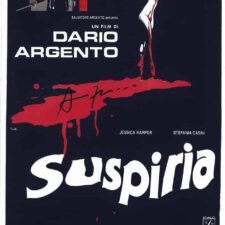 Flavio Bucci: foto SUSPIRIA (21x29cm) - Hand Signed Autografata
Flavio Bucci: foto SUSPIRIA (21x29cm) - Hand Signed Autografata  Bobby Solo Foto Autografata Autografo Original signed 14x21CM COA 024565
Bobby Solo Foto Autografata Autografo Original signed 14x21CM COA 024565  Salvatore Schillaci (detto Totò) - hand signed photo 20x25 foto autografata - s123
Salvatore Schillaci (detto Totò) - hand signed photo 20x25 foto autografata - s123  Ben Gibson - hand signed photo 20x25cm foto autografata (sa20b10-054)
Ben Gibson - hand signed photo 20x25cm foto autografata (sa20b10-054)  Kenneth Connor, Cheryl Kennedy And Alyn Ainsworth & His Orchestra* – Winnie The Pooh [NO 4] (LUG 112/21) - Used Vinyl, 7″ 45 RPM
Kenneth Connor, Cheryl Kennedy And Alyn Ainsworth & His Orchestra* – Winnie The Pooh [NO 4] (LUG 112/21) - Used Vinyl, 7″ 45 RPM 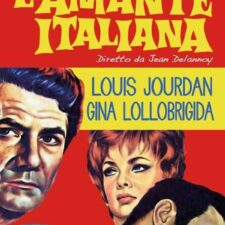 Amante Italiana - dvd
Amante Italiana - dvd  Pierfrancesco Favino Hand Signed Autografato Foto Photo 14x21cm COA 024759
Pierfrancesco Favino Hand Signed Autografato Foto Photo 14x21cm COA 024759 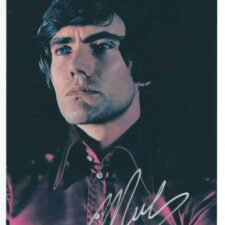 Mal (Primitives) Foto Autografata Autografo Original signed 21x14CM COA 024764
Mal (Primitives) Foto Autografata Autografo Original signed 21x14CM COA 024764  Il palazzo delle donne di Laetitia Colombani - libro autografato hand signed book
Il palazzo delle donne di Laetitia Colombani - libro autografato hand signed book  Pierfrancesco Favino Hand Signed Autografato Foto Photo 14x21cm COA 024762
Pierfrancesco Favino Hand Signed Autografato Foto Photo 14x21cm COA 024762  Chris Barber's Jazz Band – Revival / New Orleans Parade (Just A Little While To Stay Here) [SCD 2166] Used Vinyl, 7″ 45 RPM (2205)
Chris Barber's Jazz Band – Revival / New Orleans Parade (Just A Little While To Stay Here) [SCD 2166] Used Vinyl, 7″ 45 RPM (2205)  Era Glaciale (VERS. 2) blu-ray + peluche
Era Glaciale (VERS. 2) blu-ray + peluche 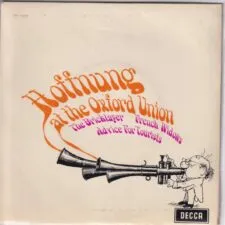 Gerard Hoffnung – Hoffnung At The Oxford Union [DFE 8682] (AGO 29/21) - Used Vinyl, 7″ 45 RPM
Gerard Hoffnung – Hoffnung At The Oxford Union [DFE 8682] (AGO 29/21) - Used Vinyl, 7″ 45 RPM 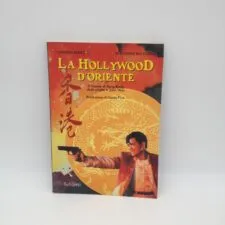 La Hollywood d'Oriente. Il cinema di Hong Kong dalle origini a John Wod - Simone Bedetti, Massimo Mazzoni (1996)
La Hollywood d'Oriente. Il cinema di Hong Kong dalle origini a John Wod - Simone Bedetti, Massimo Mazzoni (1996)  Scherzi Della Natura - blu-ray
Scherzi Della Natura - blu-ray  Ingrid Bergman di Charlotte Chandler - Traduttori: A. Plazzi, C. Volpi (Traduttore) - used book
Ingrid Bergman di Charlotte Chandler - Traduttori: A. Plazzi, C. Volpi (Traduttore) - used book 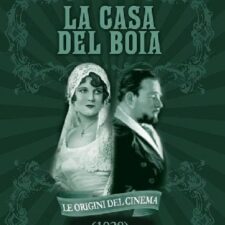 Casa Del Boia (1928) - dvd
Casa Del Boia (1928) - dvd  Vicky Il Vichingo - Il Film - dvd
Vicky Il Vichingo - Il Film - dvd 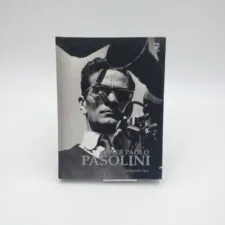 Pier Paolo Pasolini. Con CD Audio. Ediz. italiana e inglese - M. Serio, P. Gorlani
Pier Paolo Pasolini. Con CD Audio. Ediz. italiana e inglese - M. Serio, P. Gorlani 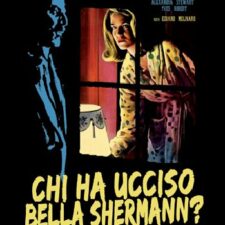 Chi Ha Ucciso Bella Shermann? - dvd
Chi Ha Ucciso Bella Shermann? - dvd 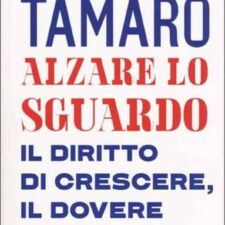 Alzare lo sguardo. Il diritto di crescere, il dovere di educare - Libro autografato da Susanna Tamaro
Alzare lo sguardo. Il diritto di crescere, il dovere di educare - Libro autografato da Susanna Tamaro 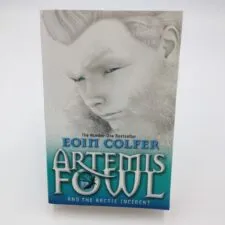 Artemis Fowl and The Arctic Incident - Eoin Colfer hand signed book
Artemis Fowl and The Arctic Incident - Eoin Colfer hand signed book 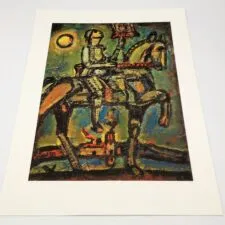 La nostra Gianna di Georges Rouault - Stampa Offset Limited Edition
La nostra Gianna di Georges Rouault - Stampa Offset Limited Edition  Vasco Rossi libro "01.07.17. Vasco mondiale. Al Modena Park la tempesta perfetta" autografato hand signed (vs17-03)
Vasco Rossi libro "01.07.17. Vasco mondiale. Al Modena Park la tempesta perfetta" autografato hand signed (vs17-03)  Chucky La Bambola Assassina - Ultimate Action Figure Child´s Play
Chucky La Bambola Assassina - Ultimate Action Figure Child´s Play  Gridalo - Libro autografato da Roberto Saviano
Gridalo - Libro autografato da Roberto Saviano  Philip Friedman "Insidious" (Old Woman) - photo hand signed 20x25cm foto autografata (001)
Philip Friedman "Insidious" (Old Woman) - photo hand signed 20x25cm foto autografata (001) 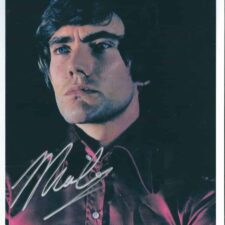 Mal (Primitives) Foto Autografata Autografo Original signed 21x14CM COA 024758
Mal (Primitives) Foto Autografata Autografo Original signed 21x14CM COA 024758  J-Ax - SurreAle (contiene SurreAle CD + ReAle CD) - Autografato
J-Ax - SurreAle (contiene SurreAle CD + ReAle CD) - Autografato  Invisibile meraviglia. Piccole lezioni sulla natura autografato da Susanna Tamaro
Invisibile meraviglia. Piccole lezioni sulla natura autografato da Susanna Tamaro  Adesso che sei qui di Mariapia Veladiano - libro autografato hand signed book
Adesso che sei qui di Mariapia Veladiano - libro autografato hand signed book  Follia Omicida - Murder Obsession - dvd
Follia Omicida - Murder Obsession - dvd 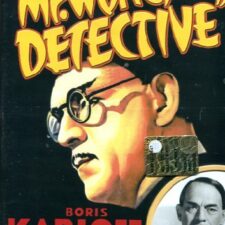 Mr Wong Detective L'Ora Fatale - dvd
Mr Wong Detective L'Ora Fatale - dvd  Philip Friedman "Insidious" (Old Woman) - photo hand signed 20x25cm foto autografata (005)
Philip Friedman "Insidious" (Old Woman) - photo hand signed 20x25cm foto autografata (005) 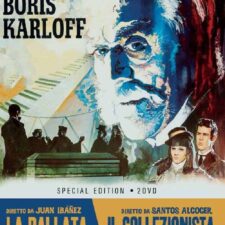 Ballata Della Morte + Il Collezionista Di Cadaveri (Special Edition) (2 Dvd)
Ballata Della Morte + Il Collezionista Di Cadaveri (Special Edition) (2 Dvd)  Libretto illustrato di Favole IL FLAUTO MAGICO 1939/1940
Libretto illustrato di Favole IL FLAUTO MAGICO 1939/1940 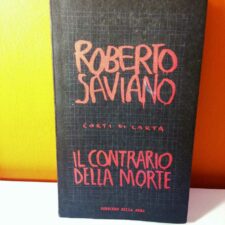 Il contrario della morte - Libro autografato da Roberto Saviano (allegato Corriere della Sera)
Il contrario della morte - Libro autografato da Roberto Saviano (allegato Corriere della Sera) 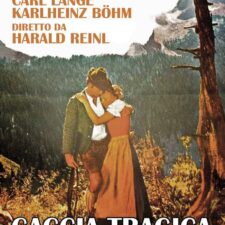 Caccia Tragica Al Castello - dvd
Caccia Tragica Al Castello - dvd 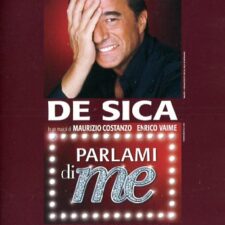 Christian De Sica - Parlami Di Me (dvd autografata cds003) con COA
Christian De Sica - Parlami Di Me (dvd autografata cds003) con COA 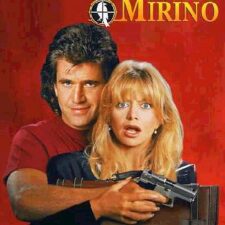 Bird On A Wire - Due nel mirino [Edizione: Regno Unito] [ITA]- dvd
Bird On A Wire - Due nel mirino [Edizione: Regno Unito] [ITA]- dvd  Johannes Weißenfeld (canottiere) - hand signed card 10x15cm
Johannes Weißenfeld (canottiere) - hand signed card 10x15cm  Nocturno Cinema n 2 luglio/agosto 2002 + dossier sul cinema a fumetti (celofanato)
Nocturno Cinema n 2 luglio/agosto 2002 + dossier sul cinema a fumetti (celofanato)  Johnny Dallas – Sings [AMX 5006] Hand Signed - Used Vinyl, 7″ 33 1/3 RPM (1972/75) rare!
Johnny Dallas – Sings [AMX 5006] Hand Signed - Used Vinyl, 7″ 33 1/3 RPM (1972/75) rare! 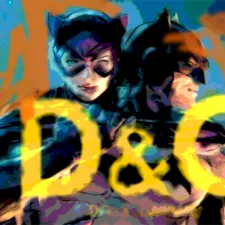 D&G vs Batman vs Catwoman di RikPen (Riccardo Penati)
D&G vs Batman vs Catwoman di RikPen (Riccardo Penati)  Enzo Gragnaniello - Radici dvd Autografo Autografato Original hand signed COA
Enzo Gragnaniello - Radici dvd Autografo Autografato Original hand signed COA  Louise Fletcher "Exorcist II: The Heretic" hand signed photo 20x25cm foto autografata hl003
Louise Fletcher "Exorcist II: The Heretic" hand signed photo 20x25cm foto autografata hl003 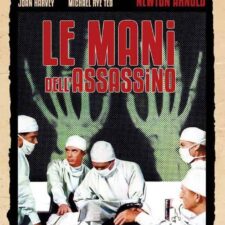 Mani Dell'Assassino - dvd
Mani Dell'Assassino - dvd 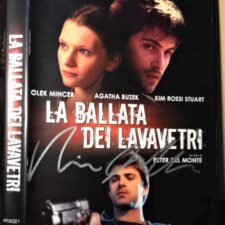 Kim Rossi Stuart dvd LA BALLATA DEI LAVAVETRI dvd Autografo Autografato Original hand signed COA
Kim Rossi Stuart dvd LA BALLATA DEI LAVAVETRI dvd Autografo Autografato Original hand signed COA  Artemis Fowl and The Lost Colony - Eoin Colfer hand signed book
Artemis Fowl and The Lost Colony - Eoin Colfer hand signed book  Il calamaro gigante autografato da Fabio Genovesi
Il calamaro gigante autografato da Fabio Genovesi  Traiano Boccalini - Ragguagli di Parnaso (1916)
Traiano Boccalini - Ragguagli di Parnaso (1916)  Robert Kirkman - Comic Book Writer "Walking Dead" - Hand Photo Signed 20x25cm foto autografata
Robert Kirkman - Comic Book Writer "Walking Dead" - Hand Photo Signed 20x25cm foto autografata  Mario Adorf hand signed photo 42x29cm foto autografata - LA MALA ORDINA
Mario Adorf hand signed photo 42x29cm foto autografata - LA MALA ORDINA  JOE DANTE: GREMLINS Funko ReAction Figure Original - Hand Signed - Autografato (Gizmo con pianola)
JOE DANTE: GREMLINS Funko ReAction Figure Original - Hand Signed - Autografato (Gizmo con pianola) 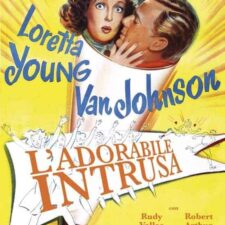 Adorabile Intrusa - dvd
Adorabile Intrusa - dvd 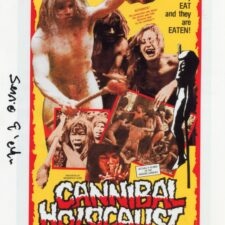 Sergio D'Offizi "Cannibal Holocaust" - hand signed photo 20x25cm foto autografata (03)
Sergio D'Offizi "Cannibal Holocaust" - hand signed photo 20x25cm foto autografata (03) 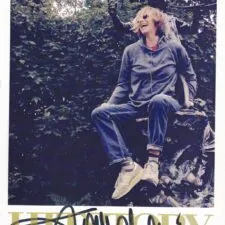 Gianna Nannini - Cartolina "History" hand signed 10x15cm autografata
Gianna Nannini - Cartolina "History" hand signed 10x15cm autografata 





